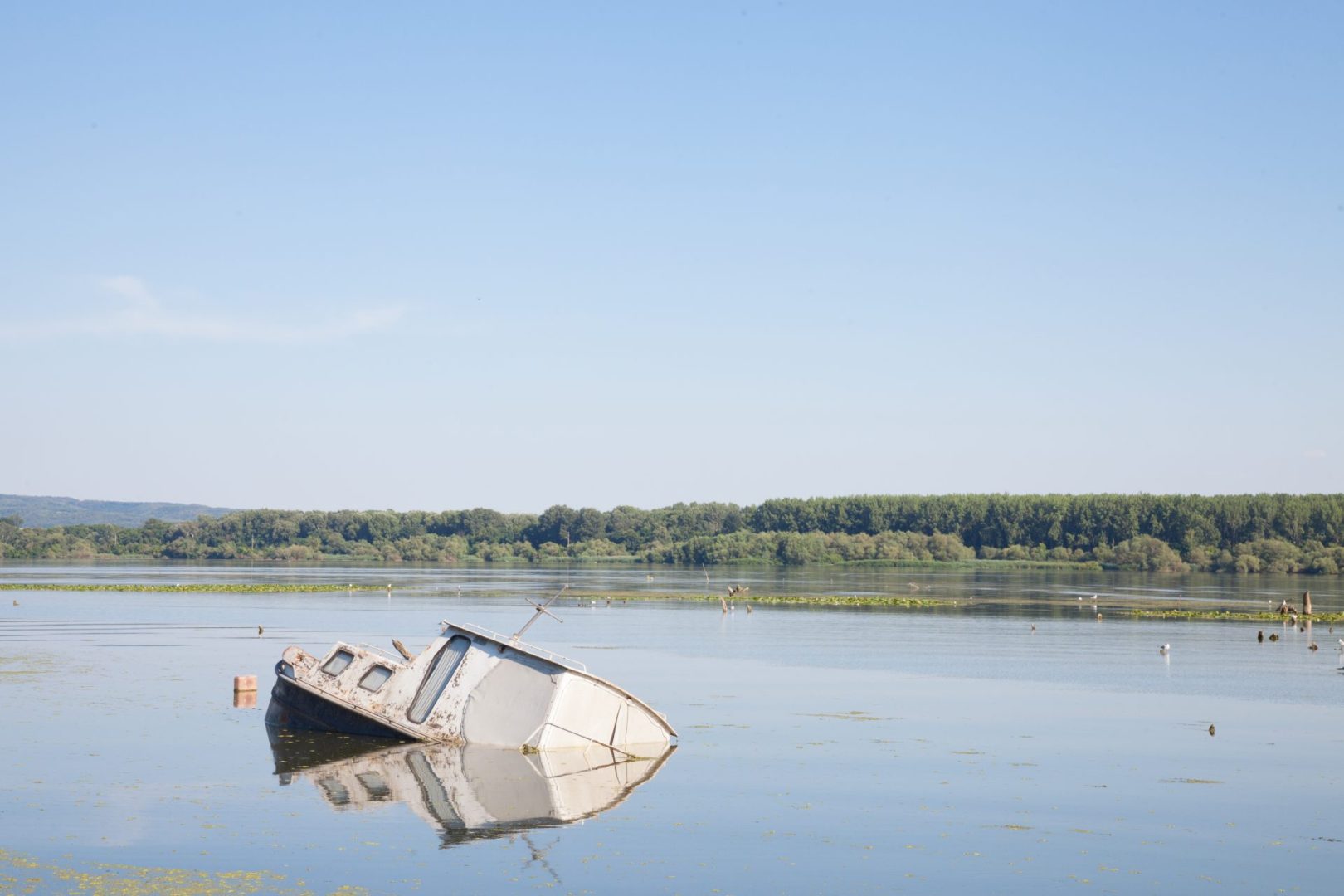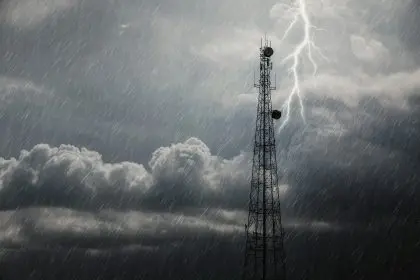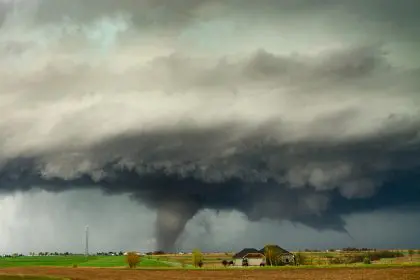What began as a peaceful Saturday afternoon on the pristine waters of Lake Tahoe transformed into an unthinkable tragedy when a sudden storm claimed six lives and left two people missing after their recreational boat capsized in the treacherous conditions. The devastating incident has left families shattered and communities across the California-Nevada border struggling to comprehend how quickly nature’s beauty became a deadly force.
The group of 10 friends and family members had ventured onto the lake for what should have been an enjoyable day on the water, unaware that Mother Nature was preparing to unleash her fury upon the alpine paradise. Within minutes, their world changed forever as violent conditions overwhelmed their vessel and thrust them into a fight for survival in the frigid mountain waters.
The tragedy serves as a heartbreaking reminder of how quickly outdoor recreation can turn dangerous, even in locations renowned for their beauty and popularity among families seeking adventure and relaxation. Lake Tahoe, typically a haven for boaters and water enthusiasts, became the scene of one of the region’s most devastating maritime disasters in recent memory.
The moment everything went wrong on the lake
The fatal sequence of events began unfolding shortly after 3 p.m. on Saturday when the group’s 27-foot Chris-Craft Launch 27 encountered conditions that rapidly deteriorated beyond anyone’s expectations. The vessel was navigating waters near D.L. Bliss State Park, a popular recreation area known for its stunning scenery and typically calm conditions that attract thousands of visitors each year.
According to the El Dorado County Sheriff’s Office, the weather system struck with devastating speed and intensity, catching the group completely off guard as they enjoyed their time on the water. The sudden storm brought a deadly combination of factors that created perfect conditions for disaster, transforming the peaceful lake into a raging body of water that posed immediate threats to anyone caught in its path.
Temperature readings plummeted to near-freezing levels within hours, while fierce winds reached sustained speeds of 35 miles per hour, creating conditions that would challenge even experienced mariners with larger, more capable vessels. The dramatic weather shift occurred so rapidly that the group had little time to react or seek shelter before finding themselves in immediate peril.
The lake’s surface, which had been relatively calm earlier in the day, suddenly erupted into towering swells reaching heights of 8 feet. These massive waves, combined with the powerful wind gusts, created chaotic conditions that overwhelmed the recreational vessel and ultimately led to its capsizing in the turbulent waters.
Desperate rescue efforts unfold across vast search area
Emergency responders received the distress call around 3 p.m. local time, immediately launching a massive rescue operation that would span more than 12 hours and cover hundreds of square miles of challenging terrain. The U.S. Coast Guard coordinated the initial response, deploying multiple teams equipped for water rescue operations in the harsh conditions that continued to plague the area.
The rescue effort faced enormous challenges from the outset, as the same weather conditions that caused the tragedy also hampered attempts to locate and assist survivors. Searchers battled against the same fierce winds and towering waves that had capsized the boat, while dropping temperatures and incoming snowfall added additional layers of complexity to an already dangerous situation.
Coast Guard teams expanded their search pattern across more than 390 square miles of water and surrounding terrain, utilizing both watercraft and aerial resources in their desperate attempt to locate the missing individuals. The extensive search area reflected both the vast size of Lake Tahoe and the challenging conditions that could have carried survivors or victims significant distances from the initial capsizing location.
The El Dorado County Sheriff’s Dive Team joined the search efforts, focusing their attention on the area around Rooster Rock, a distinctive jagged formation that rises from the lake near where the boat overturned. This location presented particular challenges for divers, as the underwater terrain features a steep drop-off that plunges more than 300 feet below the surface.
Two survivors battle hypothermia and trauma
Among the 10 people aboard the vessel, two individuals managed to survive the capsizing and were successfully rescued from the freezing waters before hypothermia could claim their lives. These survivors were immediately transported to local medical facilities, where healthcare teams began treating them for hypothermia and other injuries sustained during their ordeal in the lake.
The rescued individuals faced immediate medical challenges related to their extended exposure to the frigid mountain water, which can cause body temperatures to drop to dangerous levels within minutes. Hypothermia poses serious risks including confusion, loss of coordination, and potentially fatal cardiac complications, making rapid medical intervention crucial for survival.
Medical professionals treating the survivors have not released detailed information about their conditions, though authorities confirmed they received treatment for hypothermia and other injuries related to their traumatic experience. The survivors’ accounts may prove crucial in helping investigators understand exactly how the tragedy unfolded and whether any factors beyond the severe weather contributed to the vessel’s capsizing.
The psychological trauma experienced by the survivors adds another layer of complexity to their recovery process, as they must cope with the loss of friends or family members while processing their own near-death experience. Mental health support services typically become an important component of treatment for individuals who survive such devastating incidents.
Lake Tahoe’s unique dangers and characteristics
Lake Tahoe’s distinctive characteristics as North America’s largest alpine lake create unique challenges for recreational boaters, particularly when weather conditions deteriorate rapidly. The massive body of water straddles the California-Nevada border and reaches average depths of approximately 1,000 feet, according to research from the University of California, Davis.
The lake’s enormous size, spanning more than 190 square miles of surface area, allows weather systems to generate significant wave action when wind conditions become favorable for large swell development. The surrounding Sierra Nevada mountains can create channeling effects that intensify wind speeds and create unpredictable weather patterns that change rapidly without warning.
Water temperatures in Lake Tahoe remain cold throughout much of the year due to its high elevation and significant depth, creating immediate risks for anyone who enters the water unexpectedly. Even during summer months, the lake’s temperature rarely exceeds comfortable levels, and exposure to the water for extended periods can quickly lead to hypothermia and loss of motor function.
The lake’s crystal-clear water, while beautiful, can create optical illusions that make it difficult for boaters to judge distances and depths accurately. Combined with underwater rock formations and sudden depth changes, these factors can contribute to navigation challenges, particularly when visibility becomes compromised during storm conditions.
Weather conditions that turned deadly
The storm system that struck Lake Tahoe on Saturday brought a devastating combination of meteorological factors that created perfect conditions for maritime disaster. Air temperatures dropped sharply throughout the afternoon, falling from comfortable levels to near-freezing conditions that posed immediate risks to anyone exposed to the elements.
Wind speeds reached sustained levels of 35 miles per hour, with higher gusts likely occurring during the storm’s peak intensity. These powerful winds generated the massive 8-foot swells that ultimately overwhelmed the recreational vessel and created conditions too dangerous for smaller boats to navigate safely.
The Reno Gazette Journal reported that precipitation began falling as both rain and snow throughout the Sierra Nevada region surrounding the lake, reducing visibility and creating additional hazards for anyone caught outdoors. The combination of precipitation, wind, and dropping temperatures created a weather scenario that challenged even experienced outdoor enthusiasts.
The rapid development of these severe conditions left little time for boaters to seek shelter or return to safe harbor before the storm reached its full intensity. Weather systems in mountainous regions can develop and intensify much more quickly than similar storms in flatter terrain, often catching outdoor enthusiasts unprepared for sudden changes.
Community grieves as search continues
The Lake Tahoe community, along with visitors from across California and Nevada, has been deeply affected by this tragic incident that claimed so many lives in such a short period. Local authorities continue their search efforts for the two missing individuals, though hopes for finding survivors diminish with each passing hour in the harsh mountain environment.
The incident represents one of the most significant maritime tragedies in recent Lake Tahoe history, serving as a sobering reminder of the respect that must be shown to natural forces even in popular recreation areas. Families of the victims face the unimaginable task of grieving their losses while waiting for authorities to complete their investigation and recovery efforts.
Authorities have not yet released the identities of those who perished or remain missing, likely pending notification of family members and completion of identification procedures. The process of recovering victims from Lake Tahoe’s deep, cold waters presents ongoing challenges that may extend the timeline for bringing closure to grieving families.













